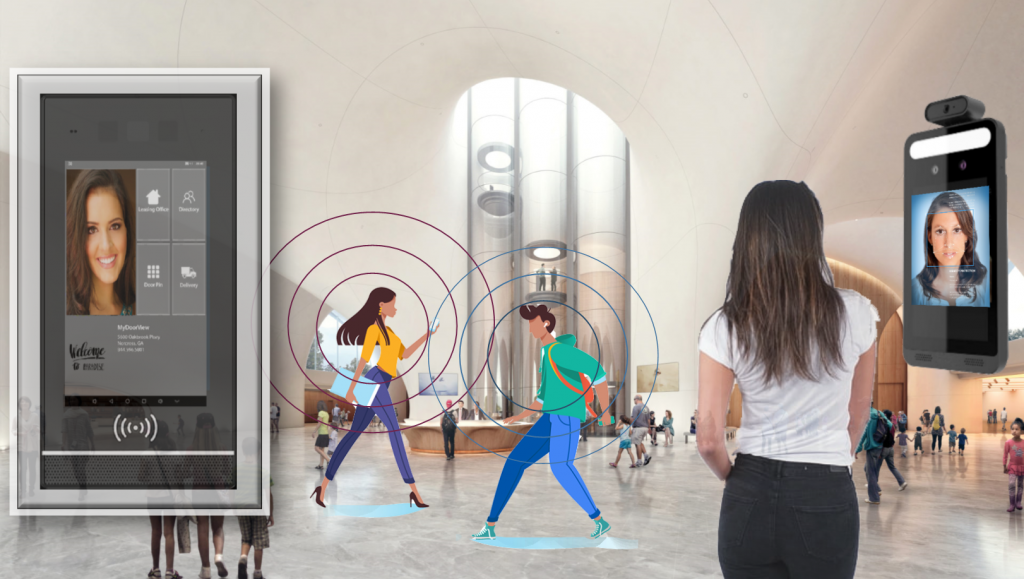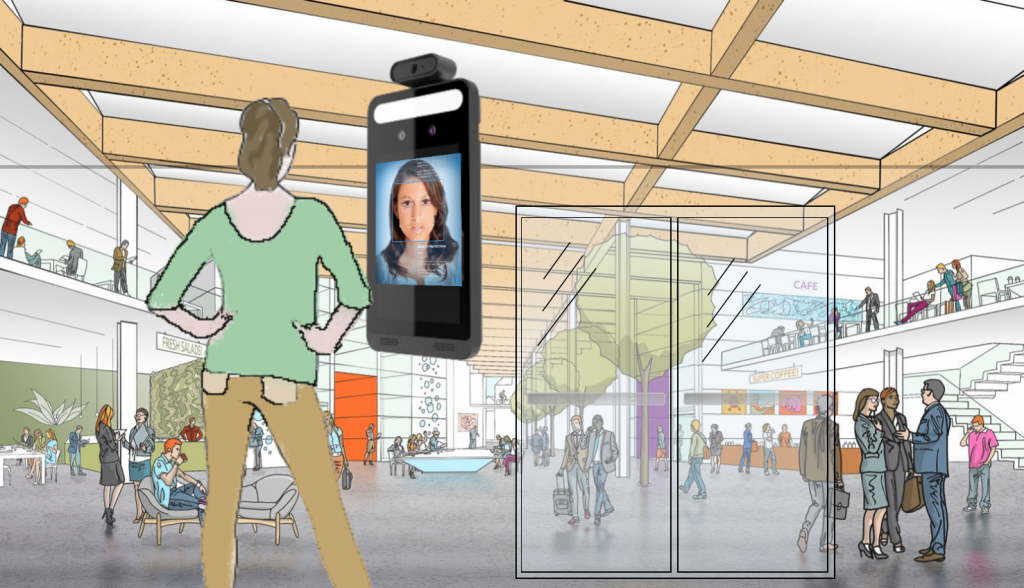Review of the Technologies that Help in a Pandemic

So is face recognition good or bad? Does it invade our privacy, or does it make us more secure? Facial recognition has had a difficult time in the market. When it was first introduced, it was a promising technology, but it was costly. Over the last few years, the price has become more reasonable, yet this biometric technology faced many challenges. There were concerns of reliability, and more recently, it was attacked for impinging on our privacy.
Several municipalities recently passed laws restricting the use of face recognition, and then COVID happened. These days face recognition and temperature screening have become the technology of choice for keeping us safer in a pandemic.
Other technologies are being used to help in the pandemic. This article reviews the technologies that are used to mitigate the effects of a pandemic.
The coronavirus (COVID-19) outbreak was labeled a global pandemic by the WHO in March of 2020. During that same month, the number of confirmed cases and the death rate grew exponentially in the United States, creating a severe public health emergency.
Technology can play a significant role in mitigating the spread of disease. As the pharmaceutical companies race to find cures and vaccines, technology can provide better protective masks and clothing, fever monitoring at the doors, touchless door entry, visitor control, and automated contact tracing solutions.
Several companies have modified existing technologies to address today’s challenges. Face recognition panels have been upgraded with thermal cameras that measure a person’s temperature. People can be monitored for elevated temperature before entering your organization. Information about the person can be collected using a visitor management system. A contactless door entry system can keep you healthy, and then a contact tracing system can be used to help mitigate the disease.
Face Recognition for Disease Mitigation
In the pandemic, facial recognition has become an essential technology for mitigating the spread of disease.
Face recognition is a way of keeping track of people in the organization. As an example, one manufacturing facility monitors the people entering and leaving for their shift. This allows them to check if a person is sick before they enter. Sometimes people don’t have symptoms, so it’s essential to keep track of who was in the facility. Face recognition is used to record the person’s face as they enter and then record when they leave. This keeps a record of everyone on a specific shift. If a person in one of the shifts is diagnosed with COVD, they shut down just one shift rather than the whole factory.
Automated Temperature Monitoring at the Door
Screening the temperature of people entering a building helps to mitigate disease. But, do you want to have a person with a handheld thermometer assigned to do the screening? There is a more automated technique that uses thermal cameras. There are thermal camera systems that can screen several people at a time and others that measure one person. It turns out that measuring the temperature of one person at a time is more accurate.
The temperature screening panels have an optical camera plus a thermal camera that measures each person as they enter the facility.

These screening panels also provide face recognition, which you can use for door entry control. As an alternative, you can turn off face recognition and simply use it to screen people’s temperature. These panels can control a door, make audio announcements, detect if a person is wearing a mask, and notify a central security person over the network.
The temperature screening panel can be integrated with existing access control systems. The article Integrating Access Control and Temperature Screening describes how to integrate the systems.
Automated Visitor Management
Who are you? Why are you here? Are you healthy? These are the new questions asked when you visit a building. More organizations are interested in automatically controlling and managing visitors. They would like to monitor people’s health and then collect information about them for later tracing. The latest visitor management systems have added new capabilities to address these concerns.

The automated visitor management systems include pre-registration of visitors, touchless kiosk panels with face recognition, and reports that allow you to trace all the people who visited your organization.
Touchless Door Entry
Touchless door entry includes automated doors that open under the control of an access control system. A visitor can use an intercom to request entry, and the safety person can remotely open the door. The door can also be equipped with an automatic door opener to enter and leave without touching a door.
Automated Contact Tracing in The Organization
The contact tracing system allows employers to safely bring their employees back to the office while reducing the risk of a future shutdown due to infected employees.
There are several methods for contact tracing people in an organization. Manual methods are popular but a challenging methodology for contact tracing. Automatic methods, such as using tags or face recognition, are much more accurate.

Automatic Contact Tracing with a Tag
Each person receives a tag that is used for contact tracing. A tag has a unique ID number that is assigned to each person. When tags get close together, they record the other tag’s ID number.
If someone in the organization becomes sick, the database provides a list of all the people they came in contact with. To learn more, read our article, How Digital Contact Tracing Systems Work.
Automated Contact Tracing Using Face Recognition
The alternative to using a contact tag is to use facial recognition software. Face recognition software can be added to an organization’s surveillance system, and this software can detect when people come close to each other. The latest CDC guidelines suggest that if people contact an infected person for 15 minutes over 24 hours, they should be notified. This software keeps track of short contact periods and then tracks the total contact duration over the period. Read more about face recognition in a crowd.
Face Recognition and Technology for Disease Mitigation Summary
Technology helps organizations bring back their employees. Face recognition provides a contactless method of identifying the people in the organization. By adding a thermal camera, people entering a building can be checked for elevated temperature. The spread of disease can be controlled using automated visitor management software along with automated contact tracing.
If you need help selecting the right technology for pandemic mitigation, please contact us at 800-431-1658 in the USA, 914-944-3425, everywhere else, or use our contact form.